Hide Show
Sell/Trade Us Your Car | Click Here To Learn More
Your tire pressure light provides a critical reminder to restore the pressure in your vehicle's tires when it gets low. You should only attempt to reset the light after first addressing the tire pressure in every tire. Once your tires are at the appropriate pressure, the light may go off on its own. If it doesn't go off right away, driving at 50 mph for about 10 minutes should help the tire pressure sensor reset.
If the tire pressure light is still on, there are a few more tricks you can try:
TPMS stands for Tire Pressure Monitoring System. The tire pressure light is one component of this electronic system, providing a visual alert when your tire pressure is low. The TPMS monitors tire pressure using either an indirect or direct method.
An indirect TPMS measures the rate of revolution for each wheel. If a wheel starts spinning faster than anticipated, the system signals to your vehicle's computer that something is amiss with the tire rotation, and your tire pressure light comes on. You must manually reset the monitor in an indirect TPMS system.
A direct TPMS uses pressure monitoring sensors in each tire to monitor tire pressure exactly. This is a more accurate alternative to an indirect TPMS system. The batteries inside these sensors will last for about 10 years. Direct TPMS systems reset automatically after tire inflation or rotation. You do need to have these sensors resynchronized when you get new tires, which requires a special tool.
Yes, cold weather will affect the air pressure in your tires. Your tires lose one or two pounds per square inch (PSI) for every 10 degrees that the temperature drops. Cold air condenses while warm air expands. Therefore, the colder air in your tires will take up less space in lower temperatures.
You may find that your TPMS light is only illuminated for a short time in the morning on particularly cold days. After about 20 minutes of driving, the air will often warm up and expand, restoring proper pressure in your tires.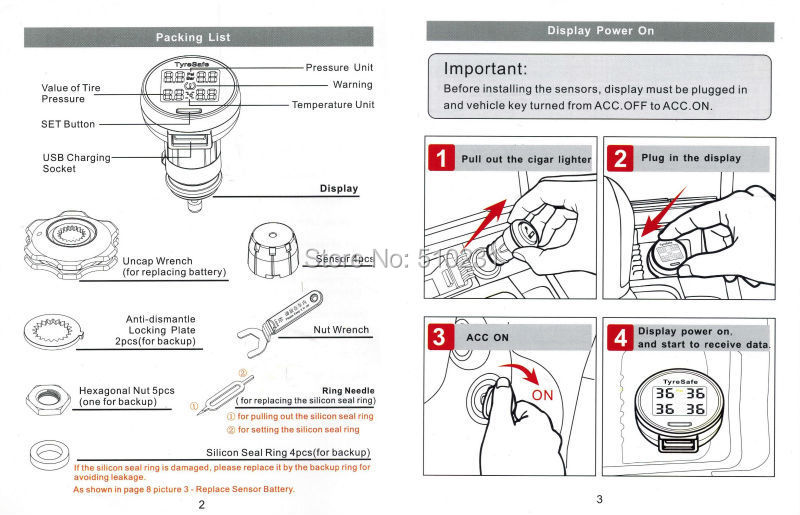 If the light stays on after 20 minutes on the road, you should add air to your tires as needed to restore the proper pressure. Low tire pressure is hazardous for your vehicle regardless of the cause.
If the light stays on after 20 minutes on the road, you should add air to your tires as needed to restore the proper pressure. Low tire pressure is hazardous for your vehicle regardless of the cause.
When the tire pressure monitor light is on, the first thing you should do is check the pressure in each of your tires, including the spare. Check the manufacturer's recommendation to determine the appropriate pressure for each tire. This is typically between 30 and 35 PSI but may vary. You should measure tire pressure when the tires are cold, which means they have not been driven in the last three hours.
To check the pressure, simply unscrew the valve cap and insert a tire gauge into the valve stem. The gauge will provide a clear reading. Replace the valve cap when you're finished. If your tires are all at the appropriate pressure, there's a malfunction with your TPMS. Bring your vehicle to an authorized dealership service center to diagnose and resolve the issue.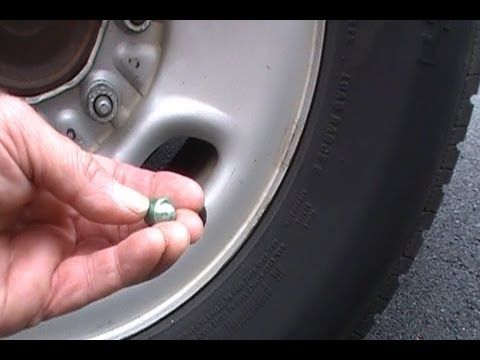
If the tire pressure monitor light is on, you should check your tire pressure as soon as possible. Low tire pressure creates a serious hazard on the road. According to the National Highway Traffic Safety Administration, 738 people died in tire-related crashes in 2017. When tire pressure is low, the tire has more contact with the road. This may cause the tire to overheat, leading to tread separation, excessive tire wear, or a blowout.
Low tire pressure also wreaks havoc on your fuel efficiency. You can save up to 11 cents per gallon simply by keeping your tires properly inflated. You'll also save money on tire replacements with adequate inflation. Keeping your tires properly inflated can add 4,700 miles to the tire's average lifespan.
The tire pressure monitor light gives you valuable information and should not be ignored.
You do not necessarily need to have your TPMS sensors replaced with new tires, but this is a good time to check them and make sure they're still in good condition.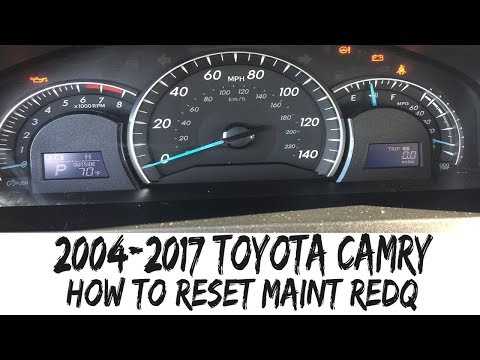 If you have an indirect TPMS system, your mechanic will need to manually reset the sensors after changing your tires. If you have a direct TPMS system, no additional maintenance is required to reset the system.
If you have an indirect TPMS system, your mechanic will need to manually reset the sensors after changing your tires. If you have a direct TPMS system, no additional maintenance is required to reset the system.
A new TPMS system will typically last for about 10 years before the batteries run out. If you have an older vehicle, you may need new sensors every five or six years. Your mechanic can advise you on the best time to replace TPMS sensors for your vehicle. When new sensors are installed, the system must relearn the location of each tire, which requires a detailed series of technical procedures. You should leave this task to a professional.
If you need tire service for your Toyota, come to Kings Toyota for prompt, reliable service. Our highly-trained technicians are equipped to assist with any type of tire issue, whether you need new tires or have a malfunctioning tire pressure sensor light. Make your appointment today.
* Indicates a required field
First Name*
Last Name*
Contact Me by*
EmailPhone
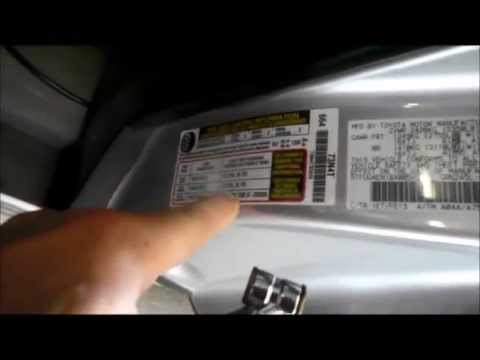
By Benjamin Hunting Feb 28, 2023
Toyota
Article QuickTakes:
The tire pressure monitoring system (TPMS) is a feature installed on all modern cars to keep drivers up-to-date on tire inflation. Many Toyotas like the 4Runner also include a gauge cluster readout that shows the individual pressure for each tire. If inflation substantially rises or drops beyond a safe range the system illuminates a warning light on the dashboard that indicates there's a problem with the tire.
Here's how to reset the tire pressure light in a Toyota once you've dealt with any inflation problems.
Once you have properly inflated the tire or tires that were triggering the light, the system should reset itself automatically. In some cases, this will occur as soon as you turn the ignition on again, but if the light stays illuminated there are a couple of ways you can trigger the sensors to re-read tire air pressure and reset the light.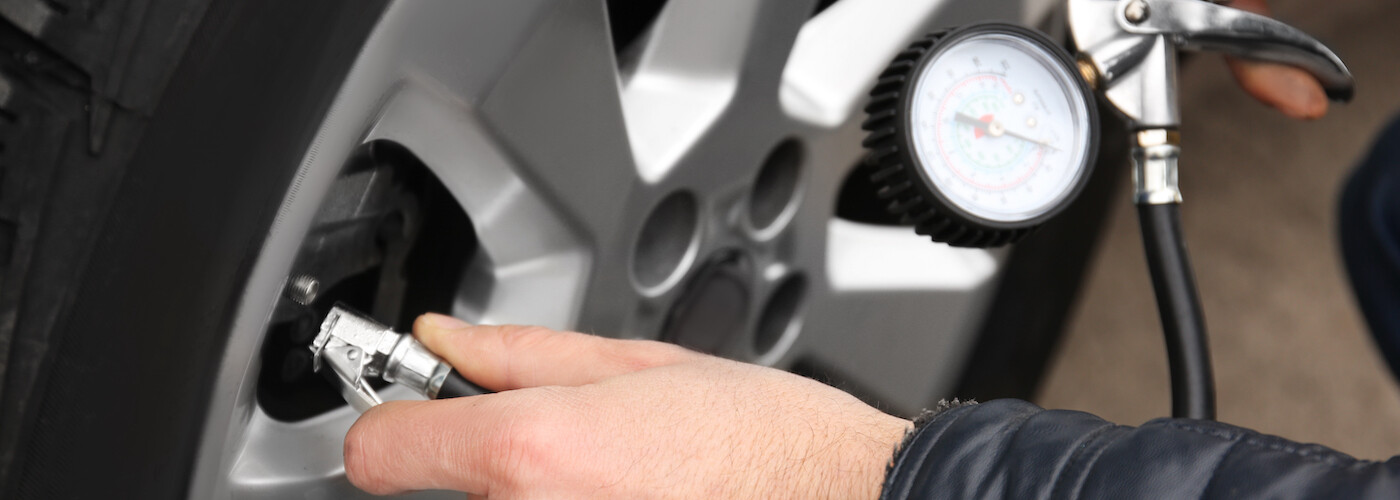
While parked, turn the Toyota on without starting the engine. This either means turning the key in the ignition to the “On” mode or tapping the start button without pushing the brake pedal.
Reach under and to the left of the steering wheel and feel for the TPMS reset button and hold it until the light on the dashboard blinks three times. Start the engine, and within 20 minutes the system should reset itself.
You can also simply go for a drive. When traveling at speeds of more than 50 mph, the tire pressure monitoring system should take no more than 10 minutes to accurately read the inflation level in each tire. Hit the road for a bit, turn off the vehicle, and turn it back on again—the tire pressure light should now be off.
There are two other reset methods that require a little elbow grease to get done. The first is to simply disconnect the positive battery cable from the car, and then crank the ignition and honk for three seconds to discharge any remaining energy in the system.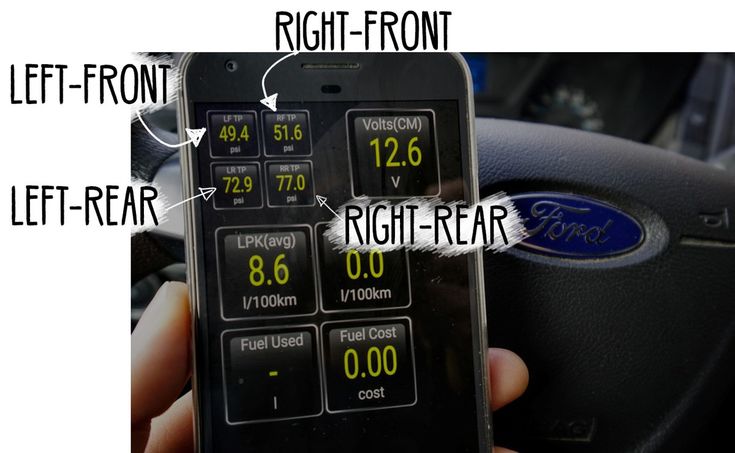 With the battery reconnected, the TPMS will automatically reset.
With the battery reconnected, the TPMS will automatically reset.
A more involved technique is to over inflate each tire to at least 3 psi more than the owner's manual recommendation, then deflate each tire completely—not just the tires on the car, but the spare as well—before re-inflating each one to the recommended psi. This can be very time consuming, and should be considered as a last-ditch effort if nothing else works.
TPMS uses a set of wheel-mounted sensors that keep constant tabs on the pressure inside each tire. This information is transmitted at regular intervals to the vehicle's computer. If pressure is outside what's considered normal, the computer illuminates the warning light on the dashboard.
One of the best ways to prevent the TPMS light from coming back on is to keep track of your vehicle's tire pressures. You can do this visually by walking around your Toyota once a week to see if any tires look low, or you can make scanning through the tire pressure display on the dashboard a regular part of your driving routine at the beginning and end of the day.
TAGStoyota 4runner
This site is for educational purposes only. The third parties listed are not affiliated with Capital One and are solely responsible for their opinions, products and services. Capital One does not provide, endorse or guarantee any third-party product, service, information or recommendation listed above. The information presented in this article is believed to be accurate at the time of publication, but is subject to change. The images shown are for illustration purposes only and may not be an exact representation of the product. The material provided on this site is not intended to provide legal, investment, or financial advice or to indicate the availability or suitability of any Capital One product or service to your unique circumstances. For specific advice about your unique circumstances, you may wish to consult a qualified professional.
Benjamin Hunting
Benjamin Hunting is a writer and podcast host who contributes to a number of newspapers, automotive magazines, and online publications.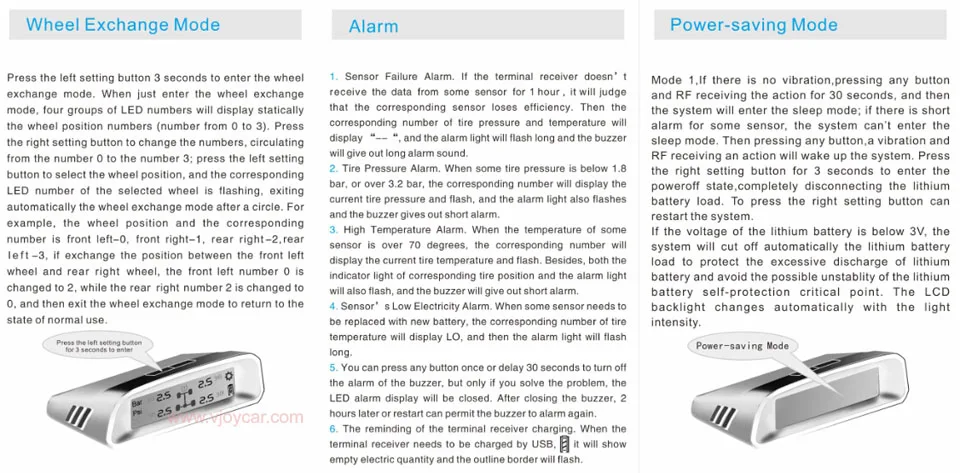 More than a decade into his career, he enjoys keeping the shiny side up during track days and always has one too many classic vehicle projects partially disassembled in his garage at any given time. Remember, if it's not leaking, it's probably empty.
More than a decade into his career, he enjoys keeping the shiny side up during track days and always has one too many classic vehicle projects partially disassembled in his garage at any given time. Remember, if it's not leaking, it's probably empty.
The TPMS system is designed to constantly monitor the degree of inflation of tires. Due to frequent errors or malfunctions, some drivers want to disable tire pressure sensors to avoid constant maintenance and problems.
Contents
To understand how and why this is done, you should understand the design of the device and the principle of its operation. The skate inflation control system contains several interconnected blocks:
The skate inflation control system contains several interconnected blocks:
Principle of operation - pressure sensors monitor the degree of tire inflation in real time. When the boost drops below a predetermined level, the controller is triggered, the signal is sent to the block, where it is processed into pulses that are understandable for indication. Information is displayed on the dashboard.
The control system displays a malfunction on the panel by means of a special light bulb. The module signals to the driver that the pressure in one or more tires has dropped below the required level. This may indicate the presence of a puncture or severe damage to the tire.
The design and operation of the sensors are primitive. To perform diagnostics of the part, it is enough to execute:
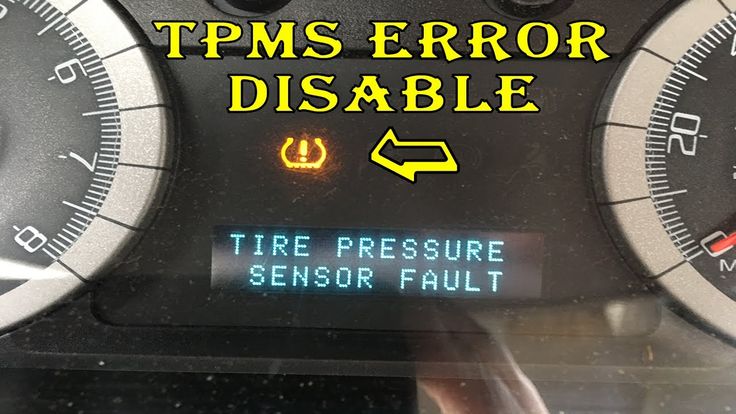
If the TPMS module icon does not go out, you will need to disassemble the wheels and examine the status of the sensors in detail. The sensor is removed from the seat and inspected. If there are no visual violations, and the element refuses to work normally, it is recommended to change the battery in the device case.
Note! On some types of sensors, the power supply cannot be replaced. Such sensors are replaced immediately.
Calibration is not required for most element types. Devices from the factory are produced completely ready for operation. To activate them, you need to install them in the wheel and the system independently reads new sensors.
In some modifications, you will need to make pairings in manual mode.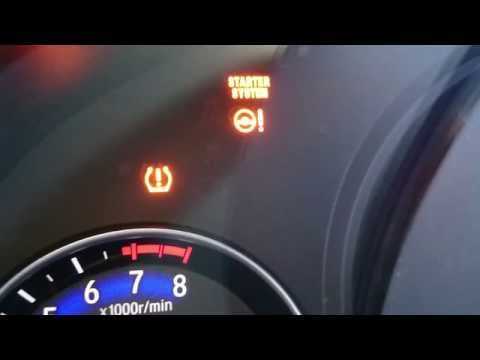 Each sensor has a serial number. It is driven into the corresponding menu field of the on-board computer, after which it is installed in the tire.
Each sensor has a serial number. It is driven into the corresponding menu field of the on-board computer, after which it is installed in the tire.
There may be several reasons.
The pressure sensor cannot be disabled by standard methods. There is no such option in the on-board computer. A flashing and “cutting out” of a part of the program code is in progress.
Some BCs have this feature. To deactivate - you need to press the desired button.
When a flat tire is detected, the sensors will signal a loss of pressure. In some vehicles such as Toyota, the sensors are turned off forcibly. Practiced on off-road vehicles, where the tires are bled to make it easier to overcome obstacles.
In some vehicles such as Toyota, the sensors are turned off forcibly. Practiced on off-road vehicles, where the tires are bled to make it easier to overcome obstacles.
The fault code is cleared automatically. To remove the indication, you will need to pump up the wheels to a predetermined level and drive the car for about 10 kilometers.
On some versions of the car, in order to reset the counter, you need to enter the settings menu on the dashboard. Then proceed according to the instructions.
To use the button correctly, first read the manufacturer's instructions. The button is located on the dashboard or near the steering rack.
If the indicator lamp appears and does not go out, there are two reasons.
 Pump up the rubber to the optimum level and check the device settings.
Pump up the rubber to the optimum level and check the device settings. It is possible for the indication to appear when the driver has put on the spare tire. Some machines have 5 sensors. If one of them is outside the vehicle, the system will consider it as a breakdown.
Causes:
On many vehicles, the option to force the sensors to turn off is not provided and is performed only by changing the software.
Leave Feedback
| DIY
| |||
Toyota Yaris - Video Lesson Model: Toyota Yaris Xp130 - Years 2011-2019 Due to the development of on-board electronics, many vehicles are equipped with various sensors that analyze many operating parameters, including tire pressure. While the latter is true, sometimes a warning light on the dashboard related to this fault may come on. First of all, check with a pressure gauge that the pressure in the 4 tires corresponds to the values specified by the manufacturer. Published on 12 December 2021 by ScegliAuto | Installation of luggage racks. The car is already equipped with a luggage rack, so you need to purchase the right luggage rails for your car model. The first step is to remove the eight plastic plugs hiding the threaded nut. Position the two beams on the roof according to the mounting holes, then tighten the eight mounting screws without tightening them. |